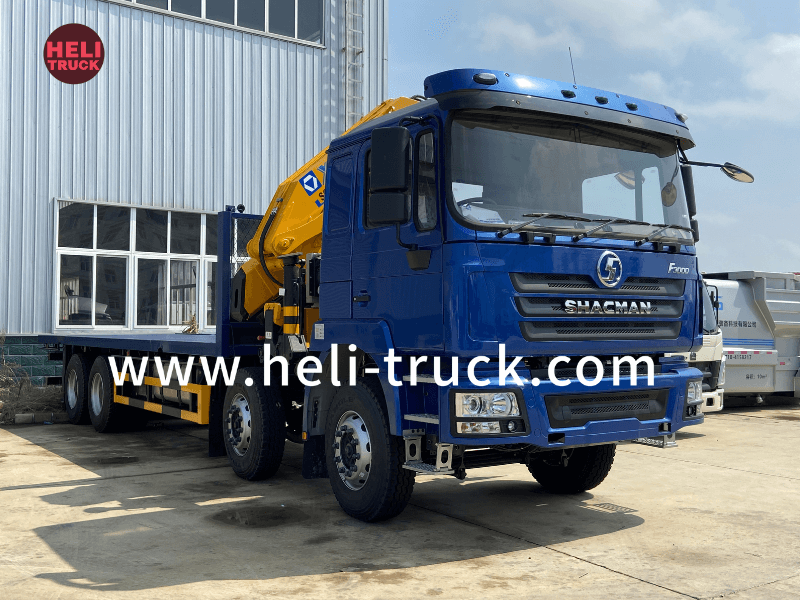Introduction
Garbage trucks play a crucial role in managing waste in urban and rural areas, ensuring that our communities remain clean and healthy. One of the key aspects of garbage truck operations is waste containment, which involves safely storing and transporting various types of waste materials. In recent years, there has been a growing emphasis on maximizing efficiency and sustainability in waste management practices, driving innovations in garbage truck waste containment technologies. This article explores the evolution of waste containment in garbage trucks, highlighting key advancements and their impact on environmental sustainability.
Evolution of Garbage Truck Waste Containment
Historically, garbage trucks used simple open containers or bins to collect and transport waste from households and businesses. While these methods were effective in basic waste collection, they posed several challenges in terms of odor control, spillage, and overall efficiency. As urban populations grew and waste volumes increased, there was a need for more sophisticated waste containment solutions to address these issues. This led to the development of enclosed waste containers and compaction systems in garbage trucks, enabling more efficient waste collection and transportation.
Enclosed waste containers provided a sealed environment for storing waste, minimizing odor emissions and reducing the risk of littering during transportation. Compaction systems, on the other hand, allowed garbage trucks to compact waste on-site, increasing the overall capacity of the truck and reducing the frequency of trips to disposal sites. These innovations significantly improved the efficiency of waste collection operations and reduced the environmental impact of garbage truck operations.
Advancements in Waste Containment Technologies
In recent years, advancements in waste containment technologies have further revolutionized the garbage truck industry, focusing on enhancing sustainability and reducing carbon footprint. One of the key innovations in waste containment is the adoption of automated robotic arms for waste collection. These robotic arms can lift and empty standardized waste containers, reducing the manual labor required for waste collection and improving operational efficiency.
Another important development in waste containment is the integration of sensor-based monitoring systems in garbage trucks. These systems use sensors to track waste levels in containers, optimize collection routes, and provide real-time data on waste generation patterns. By leveraging data analytics and artificial intelligence, waste management companies can streamline their operations, minimize fuel consumption, and reduce greenhouse gas emissions associated with garbage truck fleets.
Furthermore, advancements in material science have led to the development of lightweight yet durable materials for waste containers, reducing the overall weight of garbage trucks and improving fuel efficiency. Composite materials, such as fiberglass and carbon fiber, offer a balance of strength and weight savings, making them ideal for waste containment applications. Additionally, the use of aerodynamic designs in garbage truck bodies has been shown to reduce drag and fuel consumption, further enhancing the sustainability of waste collection operations.
Impact on Environmental Sustainability

The adoption of innovative waste containment technologies in garbage trucks has had a significant impact on environmental sustainability, helping to reduce waste generation, minimize greenhouse gas emissions, and improve overall waste management practices. By optimizing waste collection routes and schedules through sensor-based monitoring systems, garbage truck fleets can operate more efficiently, reducing fuel consumption and carbon emissions.
The use of compaction systems in garbage trucks has also contributed to environmental sustainability by maximizing the capacity of waste containers and reducing the number of trips required to transport waste to disposal sites. This not only saves time and resources but also helps to mitigate traffic congestion and air pollution associated with garbage truck operations.
Moreover, the integration of automated robotic arms in waste collection has improved worker safety and efficiency, minimizing the risk of injuries and enhancing the overall productivity of garbage truck crews. By automating repetitive tasks such as lifting and emptying waste containers, workers can focus on more strategic aspects of waste management, leading to better service delivery and customer satisfaction.
Future Trends in Garbage Truck Waste Containment
Looking ahead, the future of garbage truck waste containment is poised for further advancements driven by technological innovation and sustainability goals. One emerging trend is the use of alternative fuels in garbage truck fleets, such as compressed natural gas (CNG) and electric powertrains. By transitioning away from traditional diesel engines, waste management companies can significantly reduce their carbon footprint and contribute to a cleaner environment.
Another promising development is the use of smart waste containers equipped with IoT (Internet of Things) technology for remote monitoring and management. These connected containers can communicate data on fill levels, temperature, and contamination, enabling waste management companies to optimize collection routes, minimize waste overflow, and enhance recycling efforts. By leveraging the power of IoT, garbage truck fleets can operate more intelligently and sustainably, leading to improved resource efficiency and waste diversion rates.
Furthermore, advancements in robotics and artificial intelligence are expected to revolutionize waste containment in garbage trucks, enabling fully autonomous waste collection operations in the near future. Autonomous garbage trucks equipped with AI algorithms can navigate complex urban environments, interact with waste containers, and optimize collection routes in real-time. This transformative technology has the potential to enhance operational efficiency, reduce labor costs, and further enhance environmental sustainability in waste management practices.
https://www.heli-truck.com/dongfeng-12ton-skip-loader-garbage-truck/
In conclusion, waste containment in garbage trucks has undergone a significant transformation in recent years, driven by a growing emphasis on efficiency and sustainability in waste management practices. Innovations such as enclosed containers, compaction systems, robotic arms, sensor-based monitoring, and lightweight materials have revolutionized the way garbage truck fleets operate, leading to improved environmental performance and operational efficiency. As the industry continues to evolve, future trends in alternative fuels, IoT technology, and autonomous systems are expected to further enhance the sustainability of waste containment in garbage trucks, paving the way for a cleaner and greener future.
